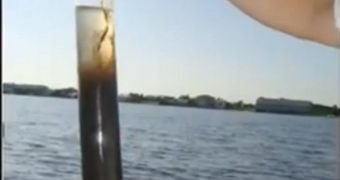Bioluminescence expert Edith Widder has revealed that up to 90% percent of the underwater creatures generate light.
Widder states that marine animals often use their own light to look for food and detect predators, the New York Times informs.
The researcher exploits this extraordinary feature to monitor levels of pollution in the Indian River Lagoon, one of the most vulnerable ecosystems in Florida.
In her laboratory, the scientist mixes sediment samples with glowing Vibrio fischeri bacteria. She relies on a photometer to measure the intensity of the light and manages to establish the level of water pollution judging by how fast the toxicity of the contaminated sediments manages to kill bacteria.
Her innovative finding makes water contamination visible and helps tackle this important issue that threatens 4,200 animal and plant in the Indian River Lagoon.

 14 DAY TRIAL //
14 DAY TRIAL //